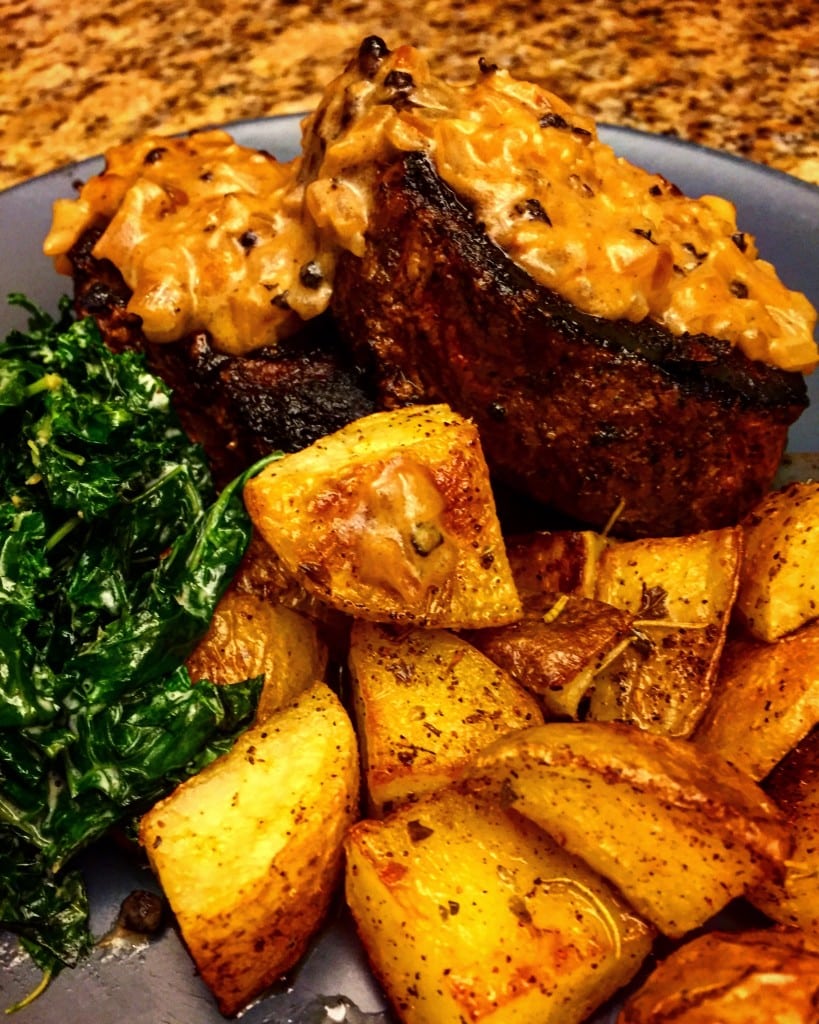Making money online is a lot like learning to cook. I was craving Korean BBQ, but the restaurant I loved was closed. Instead of just sitting there wanting the delicious Bibimbap rice bowl they make; I went online and found a recipe that seemed doable.
I eventually learned how to make almost the exact recipe as the restaurant (after failing miserably a few times), and once I built my confidence about cooking up, I also learned to make a Korean BBQ shortrib, lemon, shrimp and parmesan risotto; and incredible flavors of cookies and buttercream frostings.
When you realize you can do something, and then get your first results, you will begin to build confidence and can learn new things. The you can apply it to learn more while scaling your abilities. You just need to get over the “want mode” and go into “do mode”. Making money online is the same.
If you want to do it, you have to quit wishing and hoping for it and actually do something about it. This means hard work, lots of learning, experimenting and being prepared to get food poisoning (I know first hand) and having some really bad meals until you perfect your art. Once you’re ready to commit to this, that’s when you are ready to start making money online.
This post will take you through ten actual ways to start creating revenue (not just blank statements like “use affiliate links” or “create an AdSense account”). It is meant to provide you with the building blocks and tools to get started, but it’s up to you to do the work. I’ll also include shots of some of the food I’ve made that I never thought could be possible, until I tried.
The starting point for making money is having somewhere to bring your audience to. Ideally you’ll buy a domain name that is brandable, repeatable and has a good history (no spammy links pointing in from a churn and burn affiliate or past thin content site). If you’re serious about making money, you’ll avoid the freebie subdomains and websites and go with something where you own the URL and the content on it.
To check the history, use Archive.org and tools like MajesticSEO or SEMRush to look and see if the domain has been penalized or what existed on it if it had a previous owner.
Second you need to capture this audience so you can remarket to them. Email service providers (ESP) like Aweber, MailChimp or even a free tool are great so that you can gather and collect information and use it to re-market back to your fans.
A few ways to do this include uploading the lists to Google, Facebook and other networks. You can cross promote with other sites/brands and also open more monetization options which we’ll get into in the post.
Now that you have a destination and a way to capture as well as re-market to your fans and visitors, it’s time to monetize this traffic and make some money.
1. Affiliate Links
Affiliate links are awesome tools to help you earn a passive income stream. The trick with being successful at affiliate marketing is to pre-sell the product or service you’re promoting.
By incorporating affiliate links naturally into your content (and using FTC compliant disclosures) they provide a solution to a problem (supplies to make a craft, the right replacement part for XY machine, the right software to do ABC, etc…) you’re able to have them as something the reader needs to use in order to complete the solution for themselves.
This preselling can result in more click throughs as well as revenue since many affiliate programs only pay on a sales conversion. If you’re posts are long, you may want to provide a roundup or reminder of where to buy the tools and supplies at the bottom of the page with your links again
You also need to avoid making common mistakes.
Placing banners in a sidebar of a blog, the header or outside of the content of a post rarely works since there is no reason to click and no reinforcement to buy. You also need to know where and how people are engaging with your links and ads. That is where heatmaps that offer click maps come in handy. I use MouseFlow for this with my sites. An important thing to remember is that you’re probably not only limited to using links on your website.
If the program allows it, use them (with disclosures) on YouTube, social media sites and in your newsletters. By incorporating them into your video and social content, as your content optimizes and builds traffic, the links can now gain exposure and help to drive passive income. If you already have an active following, then you may be able to get some instant gratification to help keep you motivated.
Here is a quick checklist to finding a good affiliate program before you join a million and make some rookie errors:
- Do the programs you’re joining work with sites ranking for their brand name or URL + coupons. This could replace your tracking cookie and you may not get credit for the sales you refer.
- Is there a good cookie life? If the person isn’t ready to shop, or gets distracted, you want a cookie life that will give them time to come back and finish a purchase.
- Are there options or solutions for cross device tracking? If your audience is mobile, but the merchant has a bad mobile experience, once the referral changes devices your tracking may be gone and you lose the commission. Unless they have a cross device tracking solution in place, you need to test all experiences. This is especially important for social media marketers where mobile may be a majority of the traffic but the sales occur from a desktop computer.
- Do they have a responsive affiliate manager that can actually answer questions. If you don’t get responses within 1 business day, and they aren’t giving you good or helpful advice, move on. You need to work with companies that are serious, dedicated to the channel and have someone knowledgeable who can help you.
2. AdSense
If you have ad space that is getting clicks (you can measure this by using network stats as well as URL shorteners like Bit.ly and Pretty Link Pro), but no sales through affiliate links during certain hours or days, you may want to try using Google AdSense or another cost per click (CPC) solution during these times.
Start by pulling transaction detail reports from the affiliate networks you’re on. Now place them in a spreadsheet and look at the days and times where sales close. You may find that you don’t convert on certain days or at specific hours. Instead of giving traffic to a merchant that doesn’t convert into revenue, see if you can replace those ads with plugins like AdRotate or AdSanity that will show AdSense instead of affiliate links so you can continue to make money. (Side note: I have not used these for a long time but other friends have and like them a lot).
One Quick Warning…
One quick warning about AdSense is that you cannot control what will show up like you can with affiliate links. You can block certain sites from showing up on yours, but you cannot prevent everything you do not want.
For example, if there’s a presidential candidate you dislike, there’s nothing stopping them or one of their PACs from running ads that says I support XY candidate and having those ads show up on your site. Now you and your website are aligned with that candidate and you aren’t there to defend yourself to your visitor whose opinion could be changed. The same goes with brands.
If you’re an LGBT blog, there’s nothing stopping an anti-gay company’s ads from showing. If you run something for a specific race or gender, you could end up with offensive ads. Do a Google search for funny adsense ads showing up on sites. My favorite is the Aflac Duck showing up. You always run the risk of ads you wouldn’t want showing up when you allow ad display networks on your site.
AdSense is a great way to monetize generic content without having to find individual affiliate links, grab product images and worry about changing out links if a program closes. However, you have to have engagement to be able to make money with AdSense and with affiliate links. Without engagement, you won’t make anything which is where CPM ads come into play.
3. CPM Ad Space
If you have traffic (not bots and spiders), but for some reason nobody is engaging with your ads, you can always sell ad space. This can be done through networks like BuySellAds on an impression, weekly or monthly spot. If you have enough traffic, you can use larger ad networks.
Depending on the quality of your traffic, you’ll be able to negotiate higher CPMs as well as custom deals if you can increase exposure or give a specific merchant priority placements. You can also try the Amazon CPM network. I haven’t used this yet myself, but did launch my first ad space with them today on a smaller blog I manage. You can access this through their affiliate portal.
A basic way to think about your CPM space is:
- How much do you make on average from the site via affiliate or CPC? Check the averages inside Google’s interface for AdSense. Now sell the space at similar CPMs as a starting point.
- Because you cannot make money from ads that need engagement, can you trade this space for “branding” to companies, other sites or services that have a matching demographic?
- If you use the tools above that have click maps, attention maps and scroll maps, you can begin to determine the price points for each. If you have footer space, it probably isn’t getting many views even though it has impressions. This is because not everyone is going to go to the bottom of your page. You can see this on scroll maps and where the fall off happens. This is not very valuable as opposed to the header which might have engagement, but it is at least visible to each user. Price your CPMs by space and actual impressions. This keeps your advertisers happy and you giving proper representations of your site’s worth. The header would be worth more because people are really seeing it where the footer is worth less because not as many people make it down (even though it has the same amount of impressions).
Knowing what to start charging and which space will give you solid price points. If you do make money via CPC and affiliate, make sure to include an ROAS estimate that you can backup with sales data or conversion data. This will help you attract more advertisers since most sites are too lazy or don’t know how to collect this.
4. E-books
E-books are great for multiple reasons. You can show off your knowledge on a subject, get the person’s email so you can market back to them and also make monetize them. The trick is to think about why the person wants your ebook and how you can make it even better by creating follow up versions or a community of peers where they can come together and support other topic related needs.
If you mention products or services, include affiliate links to where they can buy the products instead of just saying what it’s called or where the person can buy it. Reference your own website when you have resources so that you can bring someone who bought your e-book on Amazon or another site to find you. You can also use it as a cross promotional tool by referencing other authors who you like and trust and ask them to reference you as well.
If you have a topic that gets updated regularly or has new versions or options, create a community from your ebook customers and bring them back when you have updates. This keeps you as an authority in their mind and you can continue to monetize the work you did with each future edition based on the original e-book.
5. Newsletter Space
Newsletters are ATM machines for many marketers, bloggers and social media influencers. You can incorporate sign up pages onto Facebook FanPages as a tab, use lightboxes from ESPs or services like OptinMonster (I love this one and am a customer) and you can test multiple placements for optimizing how to get subscribers. What’s even better is if you have real people subscribing (not contest entrants who only want free junk), you also have loyal people who like your opinions or want to know more about your niche.
You can incentivize them to sign up with a free e-book, by giving custom tips or access to content not publicly available. Other times letting them know you’ll alert them once you have new content or something to say is enough. Now you can get to monetizing your list.
The trick is to remember that it isn’t only the actual email itself that you can monetize, it’s the entire process. You can use affiliate links, sell space on a cost per hundred/thousand subscribers and even use adsense.
Here are a few places to monetize your newsletters: (aff = affiliate link, ads = adsense, cpm = cost per subscriber/thousand)
- The redirect after someone opts in (aff, ads, cpm)
- Autoresponders on the double optin (aff, cpm)
- Thank you for subscribing emails (aff, cpm)
- Your “View this email on the web” page (aff, ads, cpm)
- And anywhere else you have the attention of the subscriber during the process.
6. In AutoResponders (Social Media and Emails)
I already mentioned the types of ads you can use in autoresponders, but think about where else you have these. You can set up a thank you for following DMs on twitter. This lets you engage with the new follower.
You can recommend they get your e-book, visit your site or join your newsletter so they don’t miss your newest content. You can ask why they followed you, what they want you to write about and really get a better understanding of who they are. The trick here is to open access for them to respond by including your email or a link to a contact page.
If you’re not following them back, they cannot DM you back so they need a way to be able to reach you. This is one way you can start to get their email address and also get them into one of your monetization flows.
7. Buying a Domain That has a Boost
Sometimes it can be daunting to start from scratch. You don’t need to spend thousands to get an established domain, you just have to do your homework. Start by searching for “Best XY niche sites/blogs” in “XY year” and find some lists from sites with authoritative links. By incorporating a year into the query, you can find a domain with age. This could be the Huffington post, Forbes, etc…
You can also use a crawling tool to dig through large and authoritative niche sites looking for broken external links.
Click through the lists and broken links to find the domains they’re linking to and now create a list of your top choices from the abandoned ones. Do your due diligence on them and if one turns out to be good, you have a head start with the age of the domain and a few solid backlinks from high authority sites.
You might need to disavow some bad ones, recreate URLs for the pages where the backlinks point to and also build a brand off of it, but this can also sometimes give you a head start to building traffic and an audience. You’ll be amazed at how many sites are high quality but got abandoned because of nexus laws, the person retired or simply got tired of maintaining it because they didn’t have a good CMS. I come across them all of the time when running reactivation campaigns for the affiliate programs I manage.
8. Photography (Hobbies)
Photography is an awesome way to turn your hobbies into revenue. The trick is learning how to shoot something the way you see it. Think about why you’re shooting what you are looking at (sports/action, landscapes, portraits, etc…) and then try to picture why you love this.
If you do street shots because you see the world differently than most, capture that with your camera. If it’s food, what makes the food shot worthy for you to spend time with a camera instead of eating and then bring the camera to different angles so everyone can see why you want to shoot it instead of eating it.
I don’t actually have a camera, so I use my iPhone. I also don’t have any photo editing software so I use Instagram. I didn’t think I was a good photographer (I still don’t), but chefs have invited me to their restaurants and used my shots on their social media channels. It helped me realize that you can still get good shots without a professional camera.
If you have a reason you are shooting something, find the angle that lets you share this moment the way that you see it and that’s how you create a photo that can be sold, monetized and bring you an audience. Here’s a few ways to do this.
- You can sell the shot as stock photography on numerous sites.
- Try using it and allowing people to source it back to your site (you can get backlinks that are awesome if they’re content relevant)
- Listing in marketplaces like FineArtAmerica, Etsy or CafePress can bring in new fans and revenue
- Uploading to accounts with photo services like SmugMug give you an awesome way to display shots in high res and a full e-commerce solution for anyone almost anywhere in the world. (They have printing partners in multiple countries which means the shots are printed closer to the customer which may reduce international shipping fees).
- If you travel blog, you can keep track of sales, engagement (Instagram/Pinterest/Facebook likes) and trade room, board and fun for shooting the event and giving them the rights to the shots. Using Woocommerce and a printing solution can be great if you’re focused on the US, but solutions like the one above are better if you want to help people who live in the UK and overseas by able to shop as well.
There are tons of ways to make money with photography. The best part is you’re making money by doing things that you love. The trick is finding a way to display why you love the thing you’re shooting visually.
9. Sponsorships
Sponsorships are another great way to get temporary boosts of revenue. The trick in getting repeat sponsorships and being able to charge more is by collecting data. Saying you give branding is a lame excuse that will not work much longer. You also cannot claim and back up that you have a huge reach on social media if you have no engagement.
Brands and sponsors are getting smarter so you need to have the data to backup why they should work with you.
Try adding the following into your media kit:
- Unique and total visits by new post/share after 1 day, week, month, year. Total sitewide is only relevant if they are getting sitewide ads. Showing per post gives the real exposure they’ll get if you write about them or share them. If your per post/share is next to nothing, then you don’t have a loyal following on that channel and won’t be able to offer branding, exposure or value. This will also cause them to not want to work with you in the future if you are able to build a following or readership.
- Track revenue by niche. You can do this with affiliate links or by having the sponsor install a pixel or by asking for a report on how many sales you sent.
- How much traffic you drive by niche per post/share. You can do this by looking at stats in analytics if you’re using a URL builder, PrettyLinks or a shortener like Bit.ly.
Having real and measurable stats helps you stand out against people who just say they have XY,000 followers. By breaking it down by niche you can show additional value to advertisers and give more accurate or custom pricing.
If you know you get more engagement on blue widgets than red, you can charge more for blue and less for red because of the value of your audience to the sponsor. Instead of a flat $5, you can do $3 for red and $8 for blue because you have data to prove why your audience is a better match for the advertiser.
10. Test Everything!
The real trick to making money online is to test, test and test some more. Sitting back and reading a million how to make money online sites will leave you going to bed with no real work being done. You’ll have a ton of ideas, but no time or actual implementation.
Here are a few tips to break this bad habit:
- Schedule your day and limit the amount you research.
- Research when you get stuck (How do I code this, why won’t XY plugin work, how do I get my site to do XYZ, etc…)
- If you get lazy or make an excuse like you don’t know how, you don’t have the time, etc… smack yourself (I literally do this to myself) and realize that those excuses are what will stop you from being successful.
- You will fail and you will not make money instantly. The sooner you realize this and learn that everything takes time and there is no such thing as an easy or quick way to make money online, the faster you’ll be on your way to actually making money online.
With a ton of hard work, long hours and lots of studying/learning, you can make money online. You’ll need a bit of luck (especially if you don’t have a budget), but there are no barriers to entry except the ones you convince yourself exist.
And to help you motivate to get started, here’s some pie. Something I was really scared to try and make my first time.







